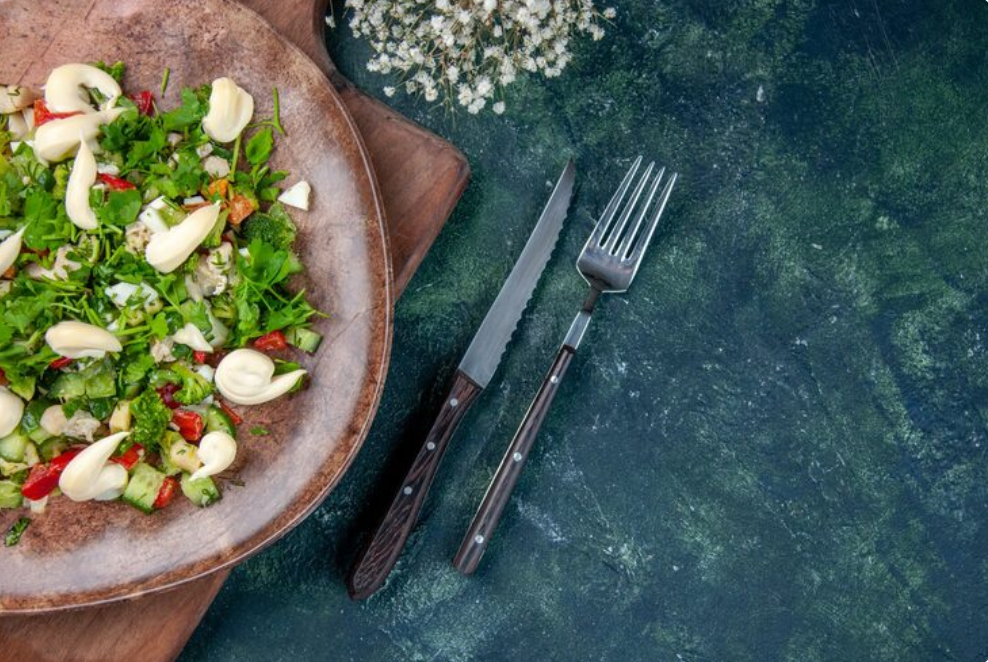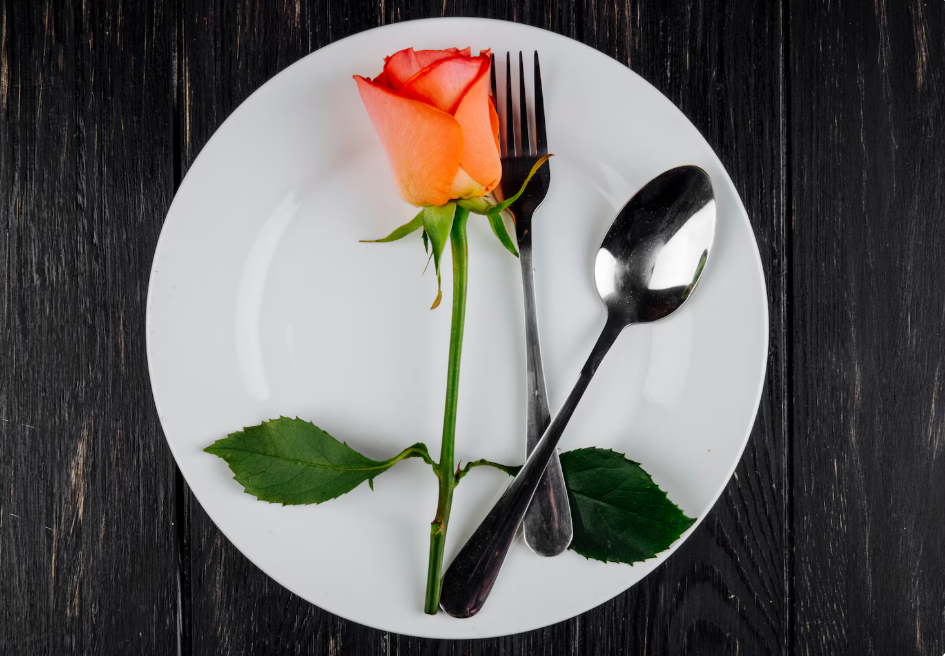Blog
The Timeless Elegance of the Salad Fork

The salad fork may appear as a small, simple utensil at the dining table, but it carries a legacy of etiquette, function, and sophistication. Though many overlook its presence, this unassuming piece of flatware represents the refinement of dining culture and the evolution of table manners over centuries. From grand royal banquets to modern homes, the salad fork has quietly contributed to the art of eating well.
History of the Salad Fork
The salad fork traces its origins to 18th-century Europe when dining began evolving from communal feasts to more refined, multi-course meals. The rise of aristocratic dining etiquette required specialized tools for each course, leading to the creation of dedicated forks for different foods. The salad fork emerged as part of this evolution, designed to accommodate leafy greens and light dishes without damaging their delicate textures. In England and France, where formality was paramount, the salad fork became a sign of sophistication.
Design and Structure of the Salad Fork
A typical salad fork measures about six to seven inches long, shorter than the dinner fork but longer than the dessert fork. It generally features four tines, with the outer tine slightly wider and sometimes notched to help cut through crisp vegetables or lettuce. The design is both aesthetic and functional—ensuring precision and comfort during dining. High-end silverware makers often crafted salad forks with ornate handles, transforming them into miniature works of art that complemented the overall table setting.
Purpose and Functionality
The salad fork serves a distinct purpose in fine dining. Its size and shape make it ideal for eating salads, fruits, and small appetizers. The shorter length allows diners to maneuver easily, while the slightly sharpened tines help spear slippery or crunchy ingredients. In formal settings, the salad fork is placed to the left of the dinner fork, symbolizing its role in the meal sequence—used for the salad course before the main entrée.
Placement on the Dining Table
Proper placement of utensils is an art form, and the salad fork has a precise place in this order. In formal dining, the salad fork sits to the left of the dinner fork if the salad is served first. However, in American-style dining, where the salad follows the main course, it is placed to the right of the dinner fork. The logic behind this arrangement ensures that utensils are used from the outside in, reflecting centuries-old traditions that prioritize order and convenience.
Cultural Significance of the Salad Fork
The salad fork represents more than just function—it symbolizes cultural refinement. In European societies, owning a full set of silverware, including a salad fork, reflected one’s social standing. It indicated not just wealth but also an understanding of proper dining etiquette. Over time, this symbolism spread across the globe, embedding itself in Western table customs. Even today, setting a table with the correct utensils communicates respect and attention to detail.
The Role of the Salad Fork in Etiquette
Dining etiquette has long emphasized the importance of using the correct utensil for each course. The salad fork, though often mistaken for a dessert or fish fork, carries specific rules of use. When presented, it should be held lightly, with the tines facing up in American style or down in Continental style. Using the right fork at the right time demonstrates good manners and appreciation for the meal’s presentation.
Differences Between Salad and Dinner Forks
While both forks may appear similar, they serve distinct purposes. The salad fork is shorter, lighter, and designed for tender foods, whereas the dinner fork is larger and more robust for meats or heavier dishes. Additionally, some salad forks feature a slightly curved tine to help cut through greens, a design not found in standard dinner forks. Recognizing these differences is key to understanding their individual functions in formal dining.
Materials and Craftsmanship
Salad forks come in a variety of materials, ranging from stainless steel to sterling silver. Stainless steel versions are durable and practical for everyday use, while silver or gold-plated forks are reserved for special occasions. The craftsmanship often reflects the brand’s attention to detail—some feature hand-engraved designs, floral patterns, or even family crests. In luxury sets, each fork is polished to perfection, adding a touch of opulence to the dining experience.
Modern Variations of the Salad Fork
As dining trends evolve, so does the design of the salad fork. Modern cutlery sets now include minimalist, ergonomic, or eco-friendly versions made from bamboo or recycled metals. Some even feature contemporary color finishes such as matte black or rose gold. These variations appeal to modern sensibilities while maintaining the fork’s original function. The salad fork has thus transitioned from a mere symbol of etiquette to a piece of modern table art.
Salad Fork in Casual Dining
In casual settings, the salad fork often doubles as a multipurpose utensil. Many households prefer simplicity and may use the same fork for both salad and main courses. This adaptation reflects modern lifestyles, where convenience sometimes replaces formality. However, the essence of the salad fork remains—balancing practicality with grace.
Salad Forks in Fine Dining Establishments
In upscale restaurants, the salad fork retains its full prestige. Fine dining establishments meticulously set their tables to ensure every utensil aligns with tradition. The salad fork, polished and perfectly positioned, plays an essential role in elevating the dining experience. It reflects the restaurant’s commitment to culinary excellence and attention to every detail, no matter how small.
How to Identify a Salad Fork in a Set
Identifying a salad fork in a cutlery set can be tricky for beginners. The easiest way is to compare lengths—the salad fork is shorter than the dinner fork but longer than the dessert fork. It often has a wider tine and a distinctive curve. Paying attention to these subtle details can help one distinguish it effortlessly, especially when setting a formal table.
Collecting Antique Salad Forks
Antique salad forks have become prized collectibles for enthusiasts of vintage dining ware. Crafted from silver or silver-plated metals, these forks often feature exquisite handwork, engravings, or monograms. Collectors value them not only for their craftsmanship but also for the historical narratives they carry. Owning an antique fork is like holding a piece of dining history—a testament to centuries of culinary tradition and elegance.
Environmental Impact and Sustainable Choices
As sustainability gains importance, consumers are turning toward eco-friendly dining utensils. Bamboo and biodegradable salad forks have become popular alternatives to traditional metal options. These choices not only reduce environmental footprints but also bring a rustic, natural charm to the table. Manufacturers are now blending modern innovation with responsible production, ensuring the salad fork continues to evolve in harmony with eco-conscious living.
The Symbolism of the Salad Fork in Modern Culture

Beyond its physical function, the salad fork has become a metaphor for refinement and order in modern culture. It symbolizes attention to detail and respect for the dining experience. In pop culture, references to “using the right fork” often signify class, manners, and elegance. This simple utensil continues to embody the ideals of polite society even in an age of fast food and digital distractions.
Conclusion
The salad fork stands as a quiet icon of dining sophistication—proof that elegance often lies in the smallest details. Its rich history, precise design, and cultural significance make it more than just a utensil. Whether in a royal banquet hall or a family kitchen, the salad fork reflects humanity’s enduring appreciation for art, order, and the beauty of shared meals. Embracing its presence reminds us that even the simplest tools can hold stories of grace and tradition passed down through generations.
FAQs
Why is a salad fork shorter than a dinner fork?
Because salads are lighter and easier to handle, the shorter fork allows for better control and elegance while eating.
Can I use a salad fork for dessert?
Yes, though traditionally they are separate, a salad fork can serve as a dessert fork in casual settings.
What is the best material for a salad fork?
Stainless steel is practical for daily use, while sterling silver offers a luxurious touch for formal occasions.
How can I identify a salad fork in a silverware set?
Look for a fork that is shorter than the dinner fork with a wider outer tine or slight notch—this is typically the salad fork.
Are bamboo salad forks durable?
Yes, bamboo forks are eco-friendly and surprisingly sturdy, though they require gentle washing and care to last long.
-

 Tech1 year ago
Tech1 year agoHow to Use a Temporary Number for WhatsApp
-

 Business2 years ago
Business2 years agoSepatuindonesia.com | Best Online Store in Indonesia
-

 Social Media1 year ago
Social Media1 year agoThe Best Methods to Download TikTok Videos Using SnapTik
-

 Technology1 year ago
Technology1 year agoTop High Paying Affiliate Programs
-

 Tech10 months ago
Tech10 months agoUnderstanding thejavasea.me Leaks Aio-TLP: A Comprehensive Guide
-

 FOOD1 year ago
FOOD1 year agoHow to Identify Pure Desi Ghee? Ultimate Guidelines for Purchasing Authentic Ghee Online
-

 Instagram3 years ago
Instagram3 years agoFree Instagram Auto Follower Without Login
-

 Instagram3 years ago
Instagram3 years agoFree Instagram Follower Without Login




















